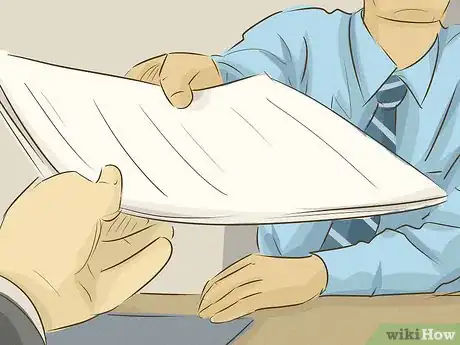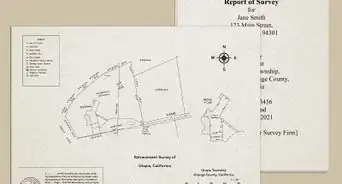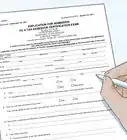This article was co-authored by Clinton M. Sandvick, JD, PhD. Clinton M. Sandvick worked as a civil litigator in California for over 7 years. He received his JD from the University of Wisconsin-Madison in 1998 and his PhD in American History from the University of Oregon in 2013.
This article has been viewed 16,073 times.
A lien is a security interest in a piece of property. If the property is sold, then the lien holder will be paid the value of the lien out of the sale proceeds. When a carpenter, plumber, roofer, or electrician works on a house, he or she can put a labor lien on the property if they are not paid. To file the lien, you must visit the Recorder of Deeds office in the county where the property is located.[1]
Steps
Preparing to File the Lien
-
1Understand labor liens. State law allows people who have put labor into a piece of property to file a lien against the property if they have not been paid. The lien is a form of security interest. Although it does not automatically guarantee payment, you will recover the value of the lien if the property is sold. In some situations, you can foreclose on the property and force a sale.
- Labor liens are commonly filed by individuals contracted to work on a piece of property. Individuals may file labor liens if they were hired directly by the homeowner or were hired by a general contractor.
- Labor liens can also be called “construction liens.”
-
2Check if you can file a lien. States mandate that you meet certain requirements before you can file a labor lien. For example, some states might require that you be bonded and insured, or that the general contractor be bonded and insured (if you were hired by a contractor).
- Another common requirement is that the person who contracted for the work must be the property owner and not a tenant.
- You should research your state law to see what requirements apply. To find your law, you can perform an Internet search. Type “labor lien” and your state into your favorite search engine.
Advertisement -
3Meet with a lawyer. If you have questions about whether you can file a lien, then you might want to briefly meet with a lawyer. An experienced attorney can advise you on the nuances of your state law. To find a qualified attorney, visit your state’s bar association. There should be a referral program that you can use.
- Although costs may be a concern, realize that many states allow lawyers to offer “unbundled” legal services. With this arrangement, an attorney can offer advice or perform other discrete tasks instead of taking over the entire legal matter. If you are interested in just meeting with a lawyer for advice, then call and ask if they offer this service.
-
4Give notice to the tenant or homeowner. Depending on the law, you may or may not need to give notice that you are prepared to file a lien. Typically, you must give notice only if you didn’t contract directly with the homeowner, e.g. you are a subcontractor. However, it is always a good idea to give notice even if you did contract directly with homeowner.
- By giving notice, you provide the homeowner an opportunity to pay you and prevent the placement of the lien on the property. Your state law should spell out the notice requirements.
- Your state may also publish a notice form for you to use. Washington’s notice form can be found at http://www.lni.wa.gov/Forms/pdf/625054af.pdf. If your state does not publish a form, then you can use this form as a model and revise it according to your state law requirements.
Filing the Labor Lien
-
1Find the appropriate office. You must file the lien with the Recorder of Deeds office in the county where the property is located. After it is filed, the lien will show up in all title reports run on the property.
-
2Fill out the paperwork. You should get a Claim of Lien form from the Recorder of Deeds office and fill it out. Ask the clerk for the form.
- Some offices won’t publish their own forms. Instead, you will have to purchase a Claim of Lien form from an office supply store. The clerk at the Recorder of Deeds office should be able to point you in the right direction.
-
3File the lien. Once you have completed the lien, you must file it with the Recorder of Deeds. You shouldn’t wait. Your state law will provide a deadline. In Washington, you must file your Claim of Lien within 90 days of having completed work on the property.
- You will probably have to pay a fee to file the lien. Contact the Recorder of Deeds office for the amount specific to your county.
-
4Mail a copy to the owner. Use certified or registered mail. You will need to mail a copy of the Claim of Lien within a certain amount of time, usually 14 days from the date you recorded the lien.
- Hold onto the receipt, as this is proof that you mailed a copy to the homeowner.
-
5Sue on the lien, if necessary. The lien may be good for only a certain amount of time. In Washington, a labor lien lasts for eight months, unless you release the lien earlier. In California, the lien is good for only 90 days.[2] If the lien doesn’t jog the homeowner to pay the outstanding debt, then you may have to sue to foreclose on the property.
- If you are thinking about trying to foreclose on a property, then you should certainly hire an attorney. The process is sufficiently complicated that the help of a lawyer is essential.
































































